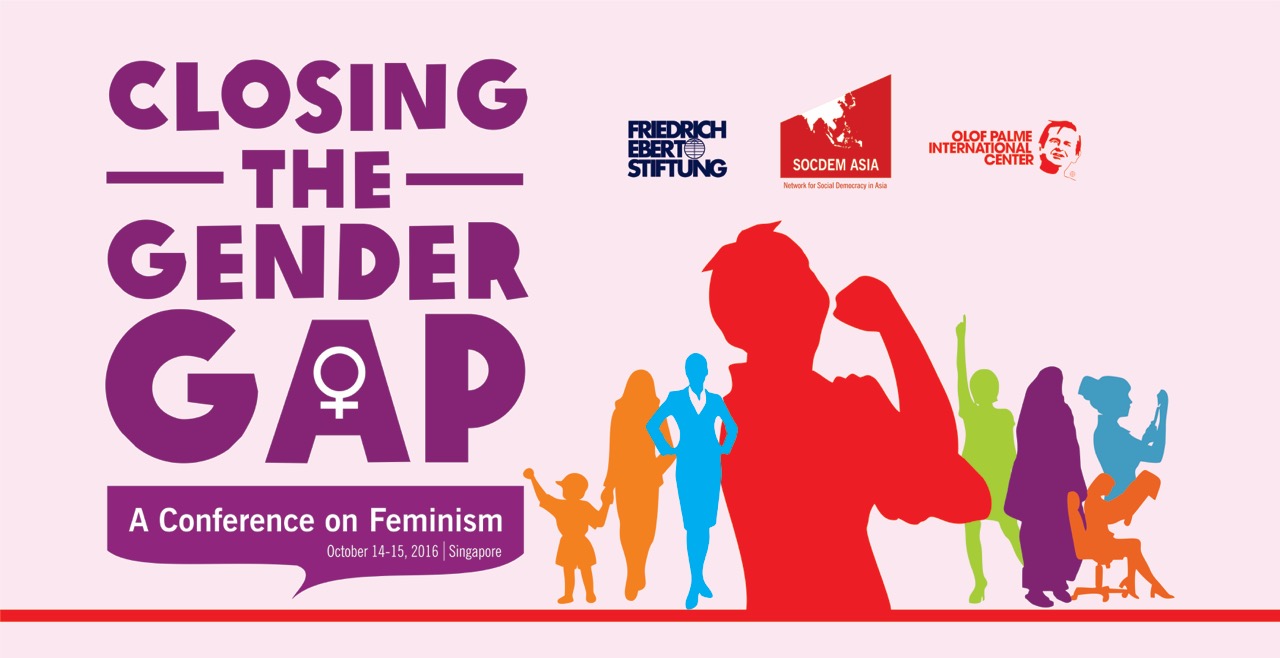Saturday, 8 October 2016
 Women make up half the talent base of each nation, making it self-evident that any given country's success and development depends on wheter women are given an equal voice in society and political representation as well as equal employment opportunities.
Women make up half the talent base of each nation, making it self-evident that any given country's success and development depends on wheter women are given an equal voice in society and political representation as well as equal employment opportunities.
A country that values its girls and women as much as boys and men, invests in their health and education, provides opportunities to participate in the economy and encourages them to be involved in its politics, will benefit from the inclusion and the equality.
Greater female representation in the public sector and labour markets increases productivity, reduces poverty and makes for a more vigorous democracy. In light of this, the short-term costs of ensuring gender equality should be seen as a long term investment: Closing the gender gap makes nothing but sense.
But obstacles to the empowerment of women are still entrenched and stubbornly resistant to efforts to remove them. They prevent the full development of the vast potential offered by the female population.
Experts track the existing gaps between women and men across four key areas: They measure access to health and education, the ability to earn a living and the ability to engage in political processes. In short, they assess whether women can live up to their potential.
Publications like the yearly Global Gender Gap report issued by the World Economic Forum indicate that in recent years the gender gap overall has narrowed.
Since 2006, an extra 250 Million women have entered the work force - but what these women earn today is what their male colleagues earned ten years ago.
When it comes to access to education, the gap has decreased compared to 2006 and now stands at 95 percent. Health and survival is the one measure that is closest to parity, at 96 percent.
Significant progress has also been made when it comes to the political empowerment of women, but the gender gap remains abysmal. Over the last decade, the existing gap was closed by only 23 percent.
The Asia-Pacific region, representing almost 60 percent of the world’s women, has made important strides in advancing gender equality and women’s empowerment. However, challenges remain.
The 2015 Global Gender Gap Report lists the Philippines as the only Asian country to be ranked under the top 10, in 7th place. Other countries follow far behind with Sri Lanka (55th) scoring at rank 55, China ranked 69th below Singapore (58th), and firther down the list Laos (60th) and Thailand (65th). Korea scored poorly in 111th place, below Indonesia (95th), India (101th) and Malaysia (102th).
Asia has become the most globalised and economically dynamic region in the world. For developing countries, the changing nature of labour markets and at the same time the accelerated automatization entails the risk of reversing the achievements in gender equality. Women's economic participation, laws and policies need to be analysed in detail to develop proper strategies that promote women's participation in the economies. Most importantly, women need to be helped to enter occupations which will likely grow in the future.
But not only developing countries face challenges due to the gender gap. Germany, South Korea and Singapore, for example, need to address the effects of their changing demographics with a rapidly aging population. Incentives to encourage women to join the workforce have to be provided in order to address looming labour shortages. Pay equity, quotas and gender budgeting are key issues for discussion.
As new trade policies are being shaped, policy makers have to keep in mind that the empowerment of women must not have the sole goal to make women into another instrument for profit maximization. Yes, closing the gender gap is a vitally important factor in bringing about economic growth. But socially just policies have to look beyond the productivity sector. Care and reproductive work is essential to any society and has to be recognized and valued as such.
A lot of thought in recent years has gone into how to close the gender gap. Action plans that have been developed include the United Nations 2030 Agenda for Sustainable Development, the Convention for the Elimination of All Forms of Discrimination Against Women, the Beijing Platform for Action as well as various national laws and policies.
At the regional level, the “Asian and Pacific Ministerial Declaration on Advancing Gender Equality and Women’s Empowerment” was adopted by member States of ESCAP in November 2014. All of these agreements and conventions create momentum and give hope for faster change.
This conference, bringing together women leaders, policy-makers and activists from across the Asia-Pacific region and beyond, aims to find strategies on how to implement the above mentioned policies and targeted measures to truly advance women's rights and participation within the labour market, governments and political parties.
As a network of progressive politicians, scholars and activists who share social democratic values defining policies to advance gender equality is of crucial importance.